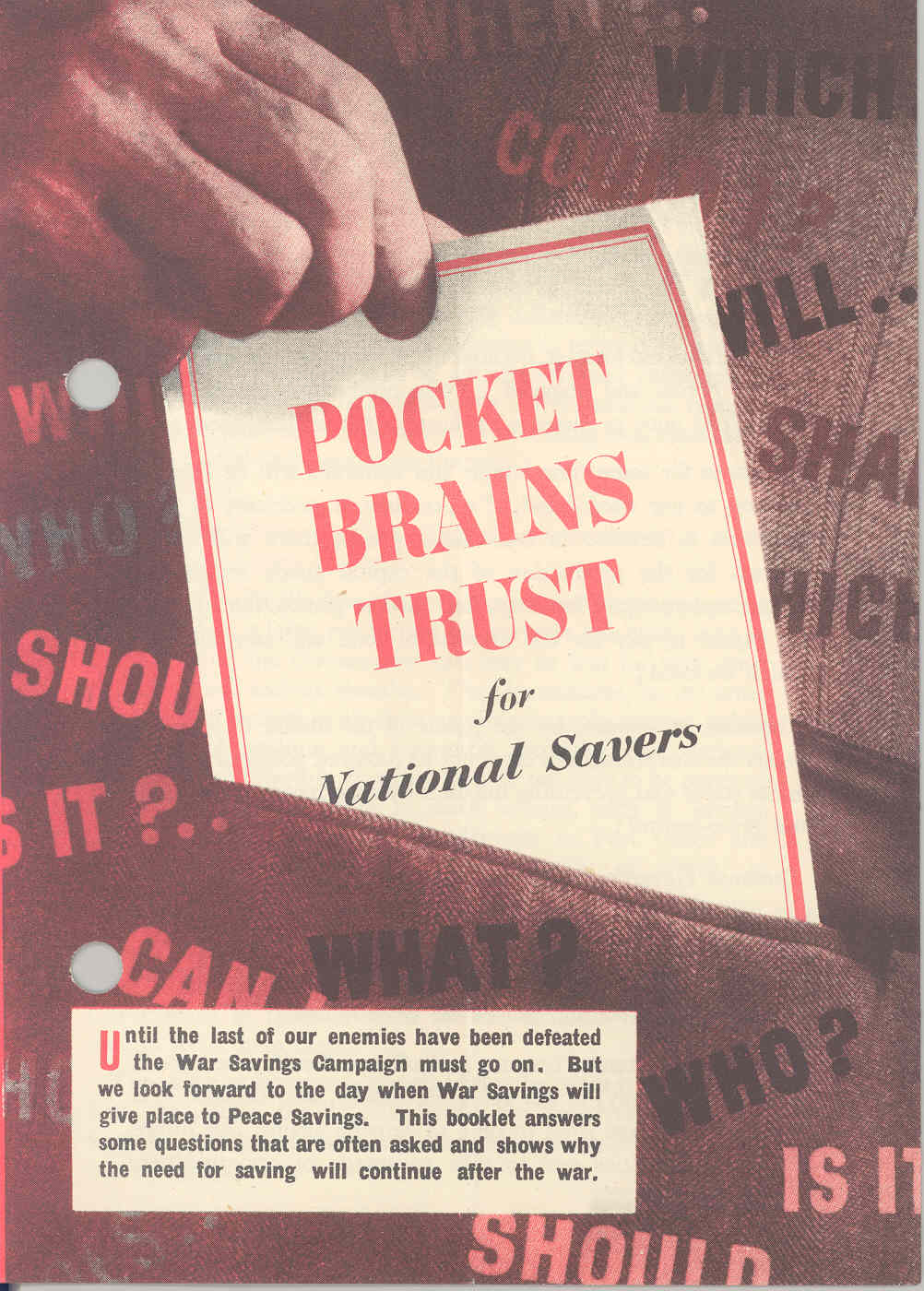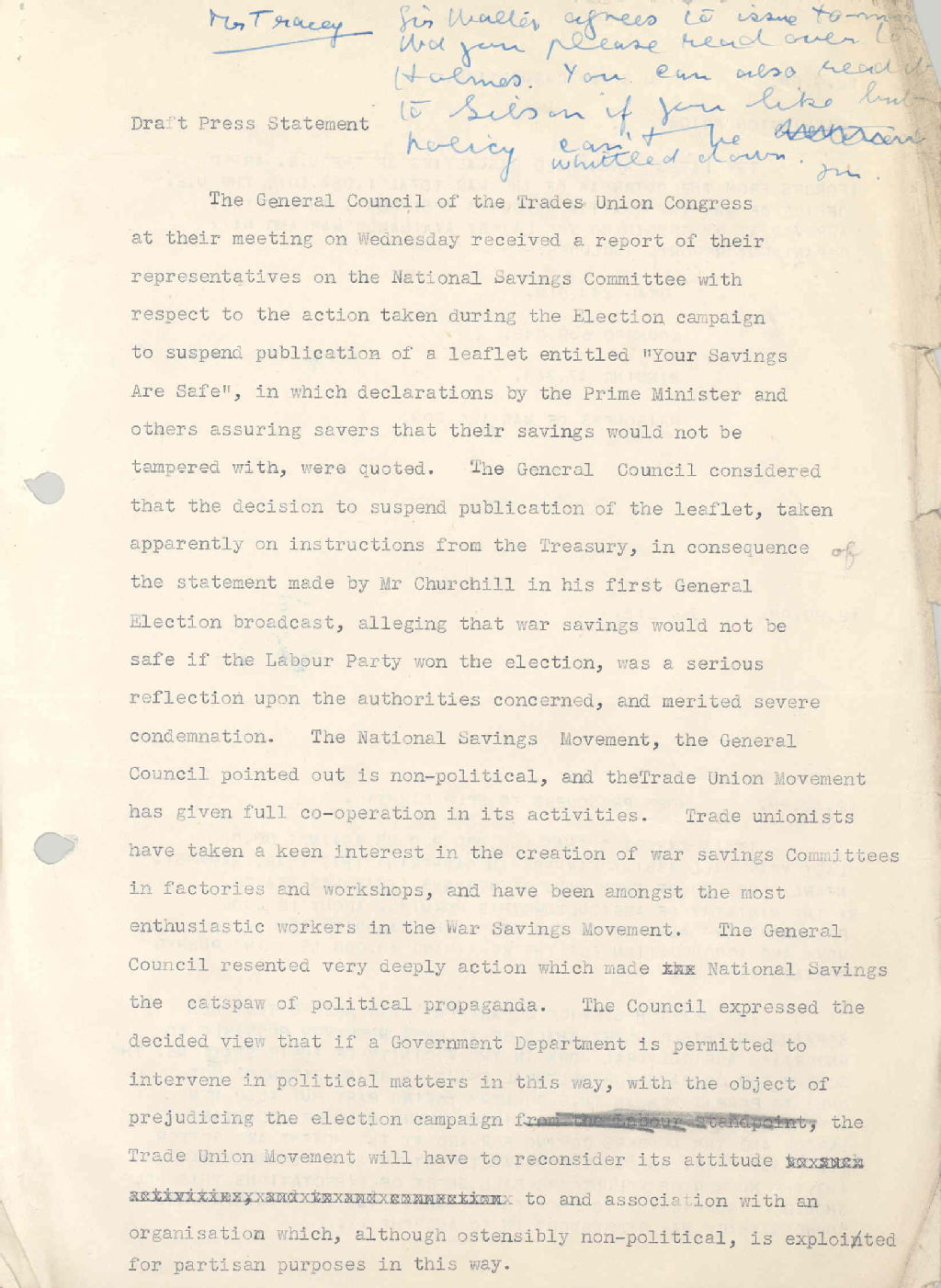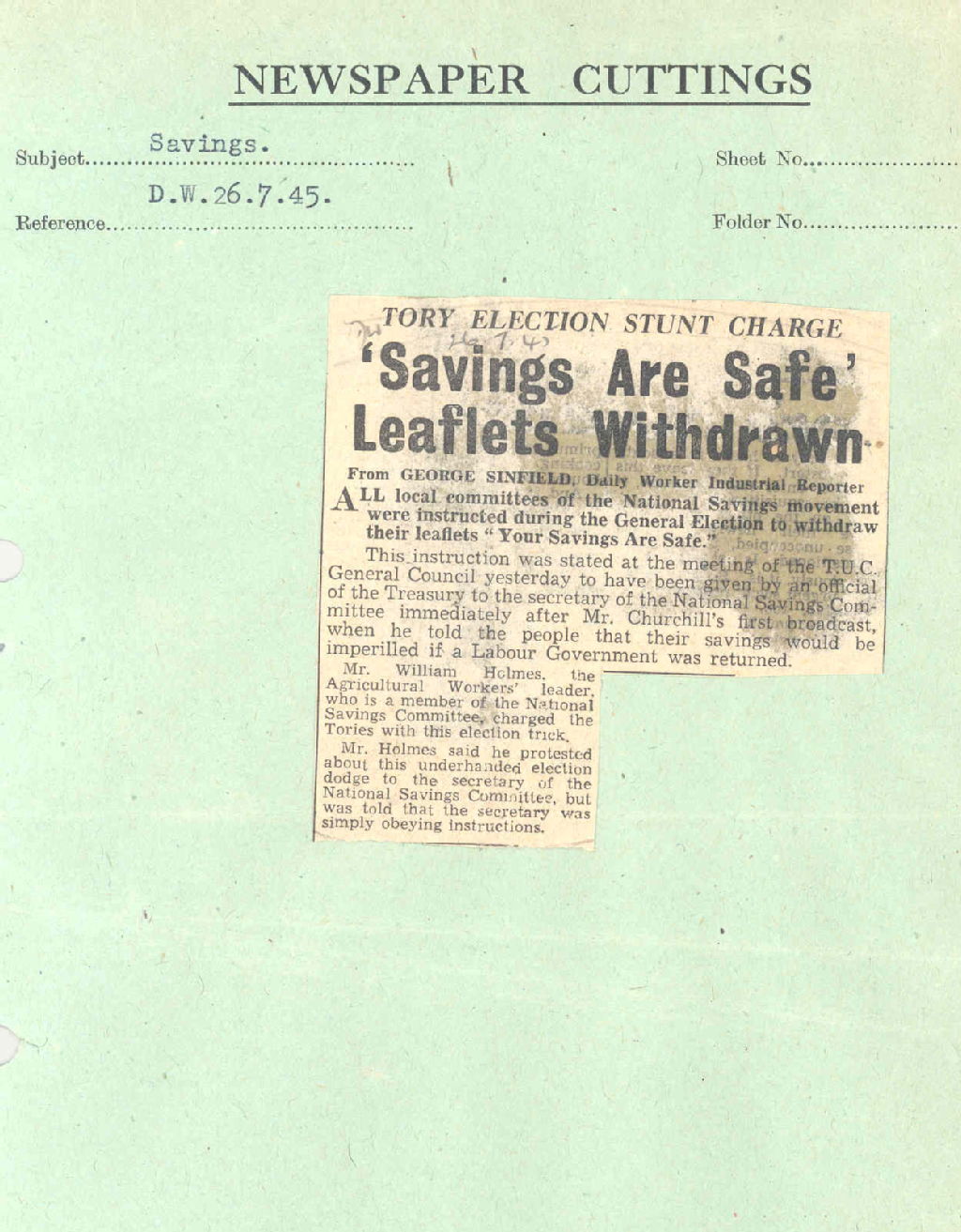Case study 2: War savings - compulsion or voluntarism?
The documents in this section relate to the idea of funding warfare through government-organised national savings schemes. The majority of documents relate either to the compulsory savings scheme suggested by J.M. Keynes in his 1940 book 'How to Pay for the War', or to the voluntary War Savings scheme actually adopted by the British government during the Second World War.
Document 1
'"Money talks": To Hitler it can say "Defeat"', November 1939
Leaflet issued by the National Savings Committee and Scottish Savings Committee shortly after the outbreak of the Second World War. It argues that spare money should be lent to the nation rather spent on luxuries or "extra comforts", as this will bring "victory nearer and [help] save British lives". The leaflet also explains "how you can lend your money to the nation".
Included in a file on the National Savings Association, from the archives of the Trades Union Congress; document reference: MSS.292/402.1/1
Document 2
'Paying for the War: Summary of proposals for a comprehensive scheme', 22 January 1940
Memorandum sent by John Maynard Keynes to the Trades Union Congress, summarising a scheme which would be published in February 1940 under the title 'How to Pay for the War'. The memorandum includes an explanation of how the scheme would affect lower income wage earners.
Included in a file on 'War. Finance', from the archives of the Trades Union Congress; document reference: MSS.292/402.2/2
Document 3
'How to Pay for the War': Differences between income groups, 27 January 1940
Explanation of the amount of income a married man earning between £300 - £100,000 a year would defer under J.M. Keynes' scheme to finance the war. In the accompanying letter, Keynes refers to the meeting that he had recently had with leading trade unionists as "the best discussion of these proposals which I have yet met with in any quarter". A 28 page report of this discussion is included in the same file (and is also available onlineLink opens in a new window).
Included in a file on 'War. Finance', from the archives of the Trades Union Congress; document reference: MSS.292/402.2/2
Document 4
Scheme for Premium Bond issue, 30 January / 1 February 1940
The scheme was proposed as a method to "induce" the working classes to save by using the appeal of gambling. This would benefit the government by diverting "a considerable amount of money now wasted on such forms of gambling as football pools, greyhound racing, etc." into "investment channels". The author of the scheme, George Gibson, was General Secretary of the Mental Hospital and Institutional Workers' Union. A Premium Bond scheme was introduced by the British government in 1956.
Included in a file on 'War. Finance', from the archives of the Trades Union Congress; document reference: MSS.292/402.2/2
Document 5
'The Budget of National Resources', 31 March 1940
Privately circulated memorandum by J.M. Keynes, in which he explains, firstly, "the paradox that, so far, a large increase in Government expenditure has been accomplished with only a small increase in output and a moderate rise in prices", and, secondly, why this is unlikely to continue. The second section summarises what Keynes sees as the only two alternatives to avoid "galloping inflation" within a year - wage fixing or compulsory savings.
Included in a file on 'War. Finance', from the archives of the Trades Union Congress; document reference: MSS.292/402.2/2
Document 6
'How to Pay for the War': The response of the labour movement, April - September 1940
These are four examples of resolutions sent to the Trades Union Congress by trade union and labour organisations in response to the publication of J.M. Keynes' proposals on compulsory savings. They criticise the scheme as an attack on the living standards of the working class, and argue that the war should be funded either through taxes on business and the wealthy, or through compulsory nationalisation of banks and industry. Other unscanned examples are included in the same file.
Included in a file on 'War. Finance', from the archives of the Trades Union Congress; document reference: MSS.292/402.2/2
Document 7
"Save Until It Hurts", 1940
Leaflets issued by the London Trades Union Advisory Committee and the General Council of the Trades Union Congress to promote the voluntary national savings scheme. In 1939 the Trades Union Congress had 4,669,186 members through affiliated trade unions (roughly one tenth of the overall population in the United Kingdom). The government therefore wanted the support of the TUC and the wider trade union movement in order to try to sell a financial scheme to the workforce which would, in the short-term, see them economically worse off. Both leaflets emphasise the point that the alternative to a voluntary scheme could be savings through compulsion.
Included in a file on National War Savings, from the archive of the Trades Union Congress; document reference: MSS.292/402.1/2
Document 8
'Some case histories of war savings in industry', [1942]
Section of a booklet published by the National Savings Committee (the rest of the booklet is also available online). The 14 case studies give examples of how companies of different sizes and in different industries (and their workers) have involved themselves in the wartime voluntary savings scheme.
Included in a file on National War Savings, from the archive of the Trades Union Congress; document reference: MSS.292/402.1/2
Document 9
'Pocket Brains Trust for National Savers', 1945
Booklet published by the National Savings Committee. It encourages members of the public to continue to keep their money in the National Savings scheme once the war is over, to provide money to re-build the country, reduce the possibility of inflation, and enable a smoother transition to a peace-time economy. The title refers to the phenomenally popular BBC radio programme 'The Brains Trust', in which a panel of intellectuals discussed questions submitted by members of the public.
Included in a file on the National Savings movement, from the archive of the Trades Union Congress; document reference: MSS.292/402.1/3
Document 10
"Election stunt charge", July 1945
An alleged threat to National Savings was used as a debating point during the 1945 General Election. The leader of the Conservative Party (and Prime Minister of the wartime coalition government), Winston Churchill, stated in his first election broadcast that war savings would not be safe if his coalition partners, the Labour Party, won a parliamentary majority. The documents reproduced here - a draft statement by the Trades Union Congress and a cutting from the 'Daily Worker' (a Communist newspaper) - strongly attack that allegation and criticise the actions of the National Savings Committee in withdrawing a leaflet entitled "Your savings are safe" following the broadcast, apparently under instructions from the Treasury. The Labour Party won the 1945 General Election with a large majority and retained the National Savings scheme.
Included in a file on the National Savings movement, from the archive of the Trades Union Congress; document reference: MSS.292/402.1/3

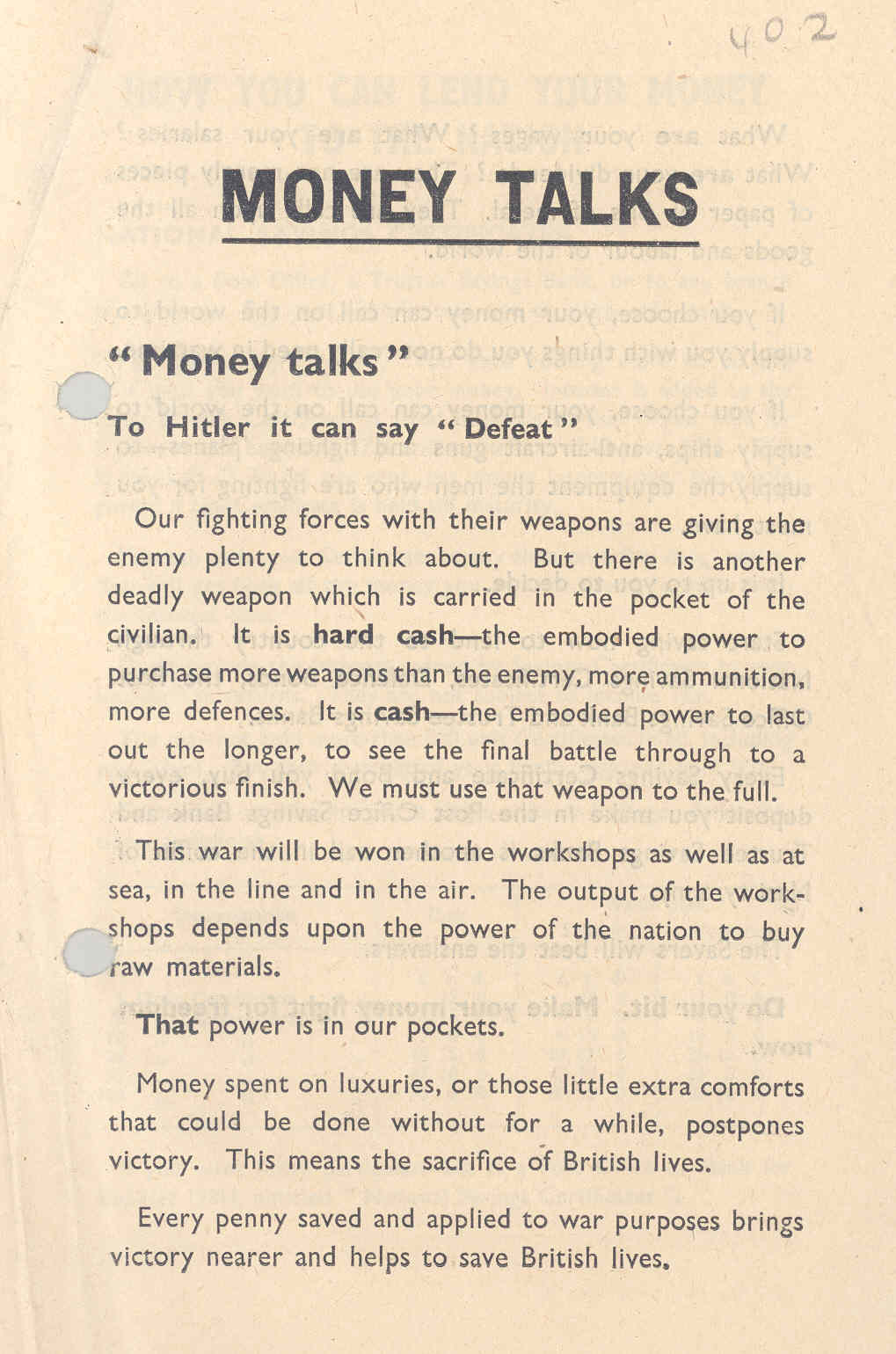





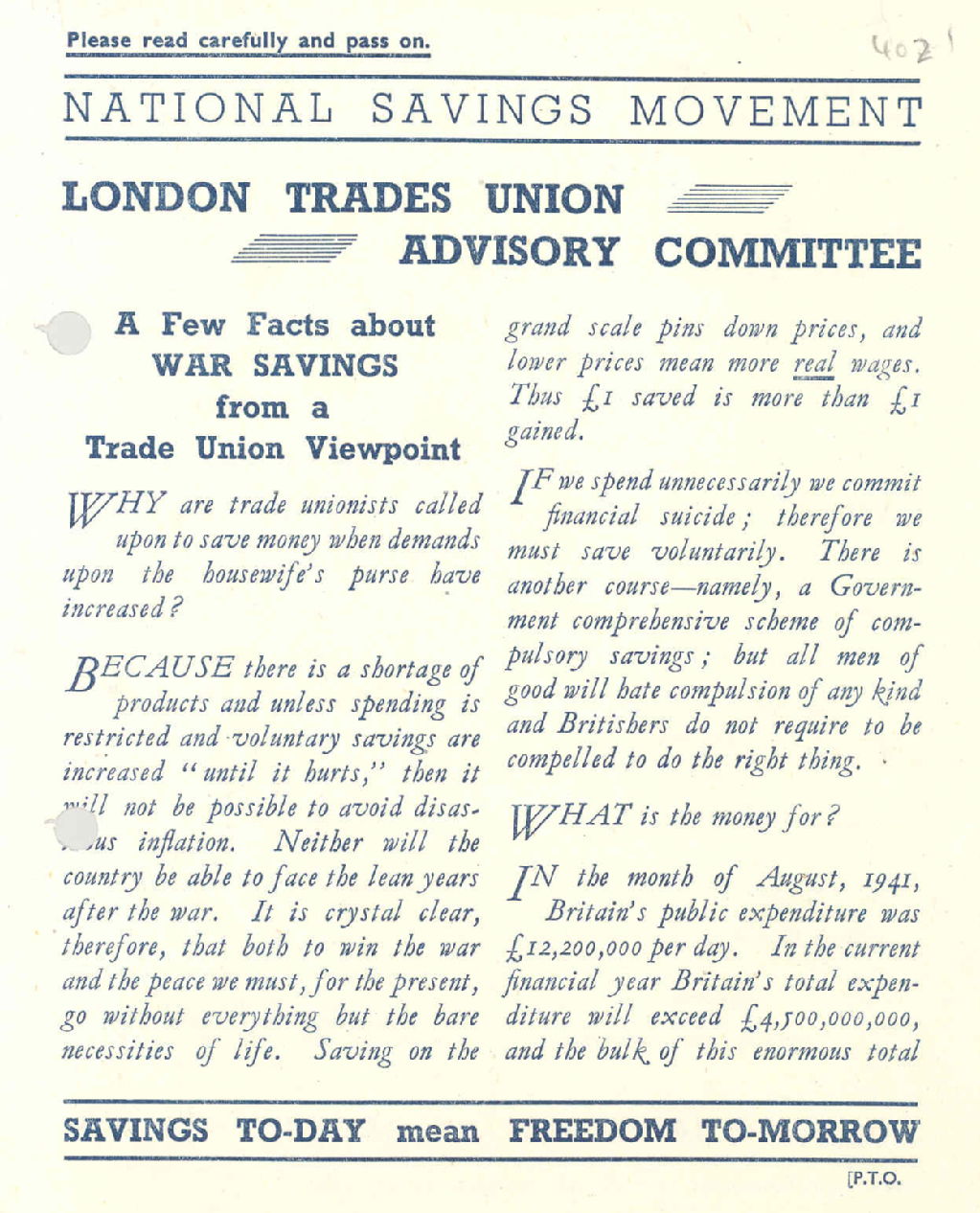
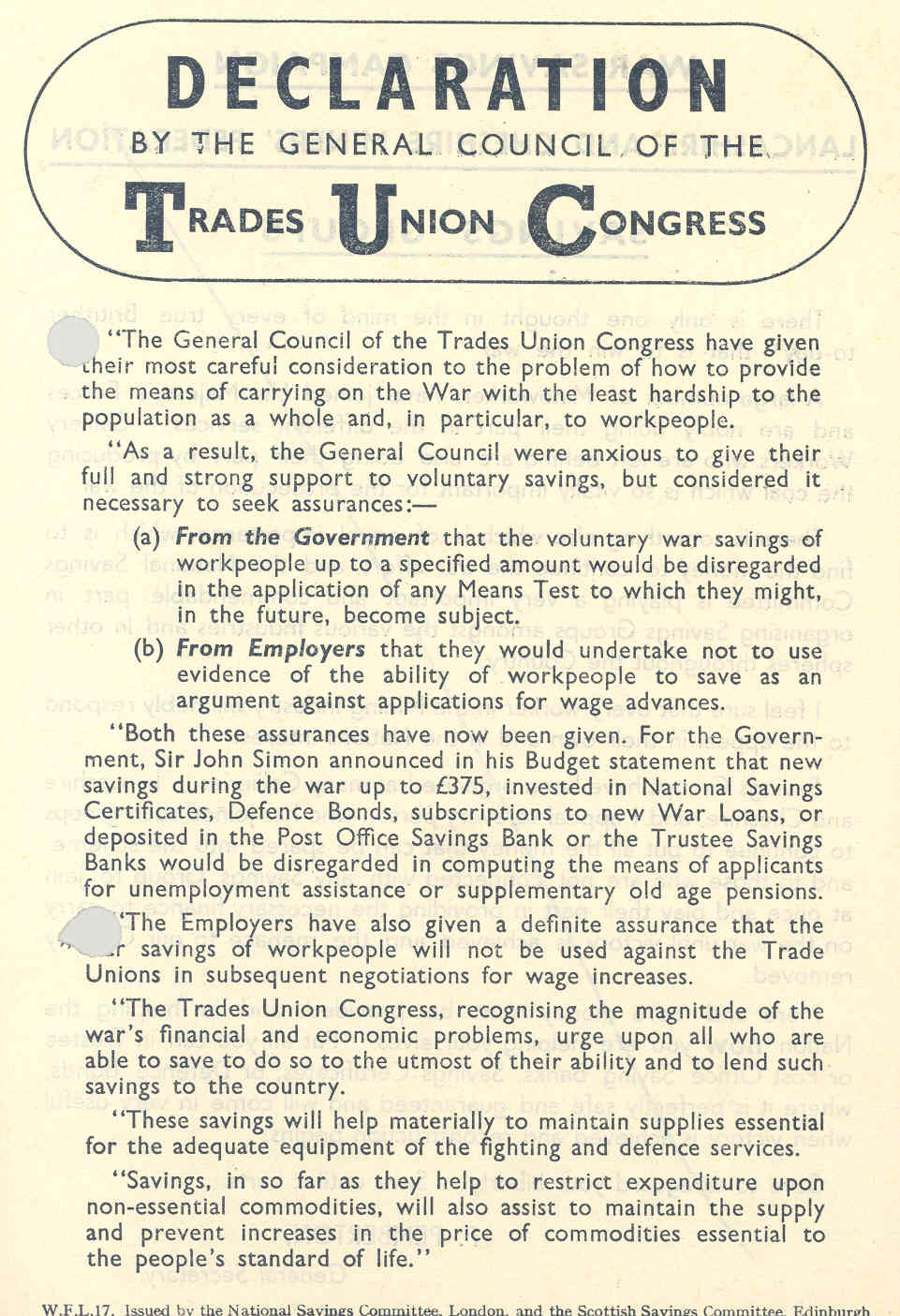
!['Some case histories of war savings in industry', [1942]](402.1-2a.jpg?)
